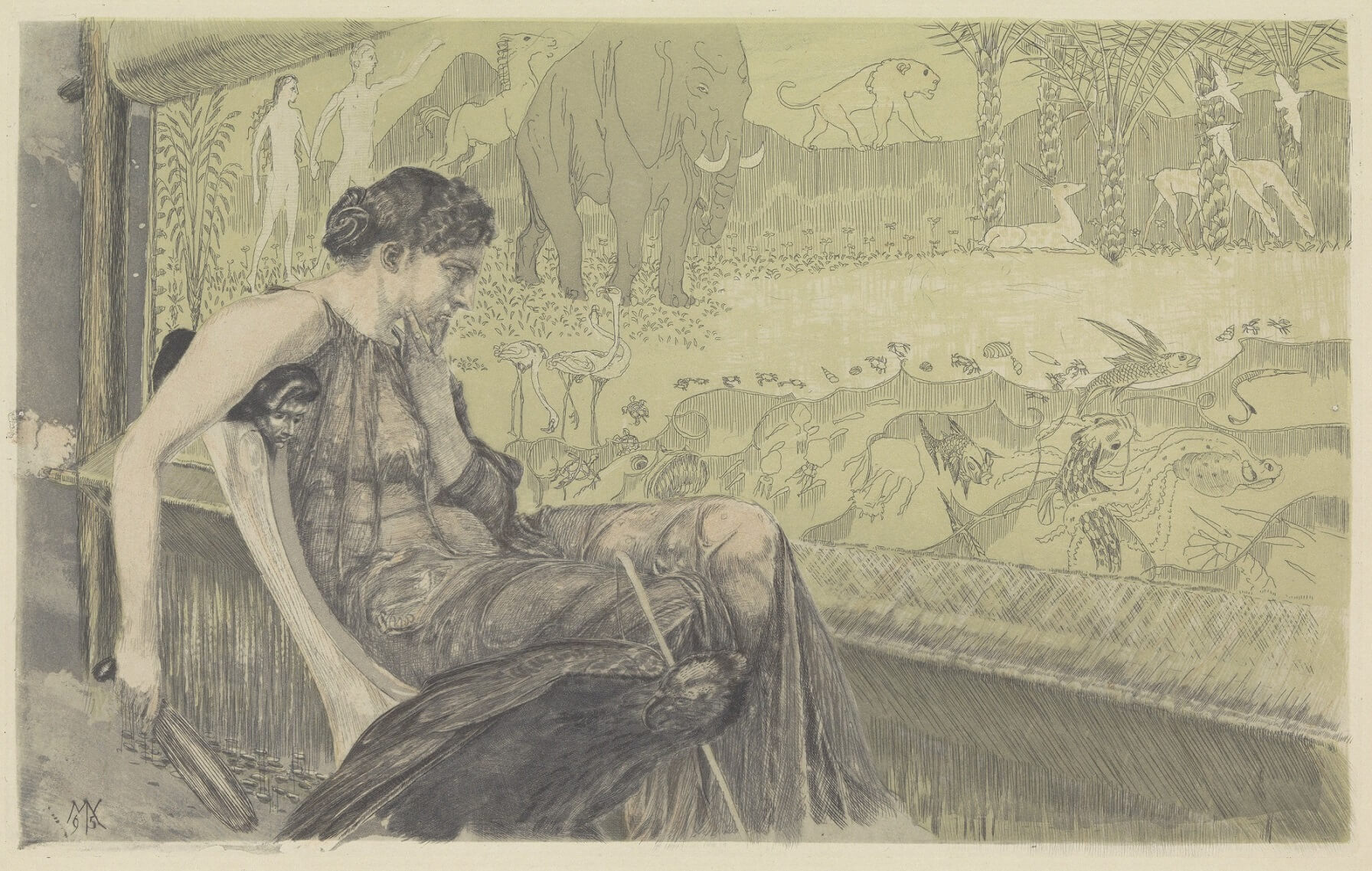When it comes to the art of dress, there exist two schools of thought among devout Catholics. One school expounds modesty as the highest aim; the other, normalcy. Unfortunately, both completely miss the mark.
While the School of Modesty teaches important lessons on safeguarding chastity, it falls short of attaining artistic success because it hardly recognizes dress as an art at all. It is like the painting instructor who never moves beyond the introductory lesson on the dangers of turpentine. For students of this school, dress becomes a kind of moral science, full of litmus tests involving measurements of two fingers’ breadths, arm waving, bending over, and fabric pinching. They learn nothing of aesthetics and believe themselves successful if only they meet the Vatican Guidelines.[1] But didn’t Dostoevsky thrill us with the claim that beauty will redeem the world? How silly if he had said merely modesty would do so![2]
The School of Normalcy has grown up partially as a backlash against the School of Modesty and partially as a delusional attempt to despoil the Egyptians.[3] The students of this school consider themselves superior to their backward brethren stuck in the calico potato sacks of modesty. They wear skinny jeans and believe themselves better evangelists for it because they are “normal” and “relevant.” Normalcy students wave dismissively at modesty as a state of mind, and while they claim to promote beauty, they hold such relativistic views of it, that their dress never becomes anything more than chaff in the wind of the zeitgeist. It would behoove them to heed an urgent warning from Dietrich von Hildebrand:
This zeitgeist of the industrialized world is itself a lie. It contradicts the true, the genuine, valid rhythm of human life, a rhythm that is indissolubly linked to the objective essence of the poetry of human life. We must fight this zeitgeist and redeem man from this curse.[4]
In our times, which boast an astonishing juxtaposition of technological sterility and drab slovenliness, treating normalcy as the highest end, far from redeeming man, only reinforces the curse; it thwarts the restoration of beauty and damages human dignity in ways too profound to grasp. Unlike the School of Modesty, which possesses some helpful lessons if extracted from errors of scrupulosity and treated only as prerequisites to the art of dress, the School of Normalcy has nothing worthwhile to offer and much that is harmful.
How then, do we dress? Given that dress is indeed an art and the theme of art is beauty, an obvious solution surfaces: we must enroll first and foremost in the school of our predecessors, the School of Beauty.[5] This is not to say that we must make exact replicas of historical dress, but if we are to restore beauty to dress, we must study those who have done it before, and done it amazingly well. What was handed down to them as naturally as the languages they spoke, we must, like feeble patients recovering from a stroke, begin the slow and difficult work of rehabilitating. Catholic artists, philosophers, historians, and writers must take up hard questions without bowing to specious arguments for “states of mind” and “cultural norms.” What actually constitutes beautiful dress? What ways of dress are best for the salvation of man? And what must we do to begin?
Despite the enormity of the challenge, hope still prevails. After all, two pillars of the triad that must support the art of dress are already in place: with the Church’s teaching on the identity of the human person, the differences and complementarity of the sexes, the good of family life, of work, of leisure, and the ultimate purpose of each human life, we see that the pillar of truth already stands firm. Furthermore, the Church’s clear teachings on the necessity of chastity, modesty, and fraternal charity, form the pillar of goodness. It is now only the third pillar, the one of beauty, which is lacking, thus causing the triad to topple sideways.[6] But this need not be the case. We Catholics, sons and daughters of the most beautiful cultural heritage the world has ever produced, need not be content to dress in an ugly, impoverished way. The time to begin the rehabilitation is long past due, and though we depend on guidance from artists and intellectuals of good taste, we all, as daily practitioners of the art of dress, bear tremendous responsibility. And if we find our task daunting, we must simply recall that Christ has promised to clothe us better than the lilies of the field if only we continue seeking Him.
Photo Credit: Penelope kijkt in gedachten verzonken naar haar weefgetouw, Max Klinger. Wikimedia Commons.
[1] The so-called “Vatican Guidelines” or “Vatican Standards” consist of a few very clear Vatican documents spanning from the late 1920s to the 1960s. Whether one agrees with them entirely or not, they are worth serious consideration. They may be found various places, but a good compilation of them translated to English is here.
[2] The topic of beauty and its power is woven throughout Dostoevsky’s The Idiot.
[3] The delusion springs from the erroneous assumption that the Egyptians actually have something worth despoiling. One may point out that post-modern dress has given us synthetic fibers, stretch fabrics, and, in short, all the wonders that plastic can boast, but one must realize that these are technological, not artistic development and are, in the vast majority of cases, really quite ugly. Thus, for reasons of utility, these technologies may have value, but it is a delusion to suppose that they are post-modernity’s contribution to the art of dress when they are, more often than not, the destruction of it.
[4] Dietrich von Hildebrand, Aesthetics, trans. Brian McNeil (Steubenville, Ohio: Hildebrand Project, 2018), vol. II, 65.
[5] Ibid., 47.
[6] I owe the triad formula to the insight of Dr. Peter Kwasniewski who shared it with me in personal correspondence.


